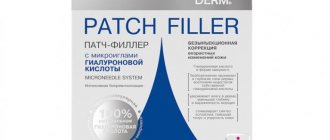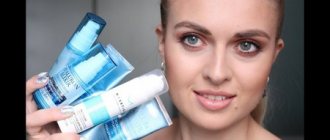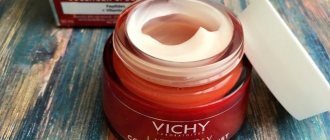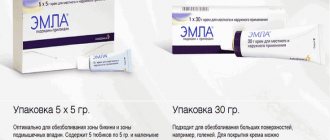Cracked heels are a very unpleasant phenomenon. And more than every second person experiences it at least once. Cracks appear on dry, rough skin, which bursts and forms this kind of damage. And they create not only physical discomfort. But they also noticeably spoil the appearance of the legs. And if appropriate measures are not taken in time, the consequences will not be long in coming.
The cracks will begin to bleed over time, making movement difficult and causing pain. And this is not only unpleasant, but also dangerous to health. After all, an open wound is an ideal way for infection to enter the body and, as a result, a step towards developing severe infectious diseases.
The main causes of cracks
Cracks in the feet and their constant progression are a consequence of impaired trophism or the presence of hyperkeratosis. Trophic disturbance occurs when there is a disruption in the circulatory system.
Hyperactosis has many more causes:
- rough epidermis;
- skin prone to excessive secretion of sweat by the glands;
- the presence of a thick layer of skin consisting of eleidin, which is a special protein that covers the epidermis of the palms and soles;
- excessive regular load when moving; wearing shoes made of artificial or synthetic material;
- predominantly active lifestyle. Constant exercise stimulates the release of protein-kerotene in excess. This, in turn, provokes cell proliferation, resulting in the phenomenon of hyperkeratosis of the soles.
All of the above reasons are accompanied by a decrease in the sensitivity and pliability of the skin, which leads to the appearance of cracks. But this is not the only consequence of the formation of excess keratinized skin. Thick epidermis is also more prone to the development of fungal diseases, which often occur simultaneously with hyperkeratosis. After all, the keratin produced by the epidermis is pure organic matter. And it is a “tidbit” for a large number of fungal microorganisms.
The causes of cracks in the feet can be listed for a long time. The list of the most frequently encountered ones should be supplemented with the following factors:
- lameness resulting from circulatory disorders;
- flat feet in various forms;
- leg deformity;
- overweight, obesity;
- diabetes;
- iron deficiency, anemia;
- skin diseases;
- vitamin deficiency, especially regarding the lack of vitamins E and A;
- polyneuropathy.
Cracked legs should be a cause for concern. It is not worth treating them yourself if there are pronounced symptoms of hyperkeratosis. It is recommended to visit a dermatologist. It is he who, having found out the root cause of the disease, will be able to prescribe the correct treatment. Sometimes it is possible to do without drug therapy, coping with the disease using creams, pharmacy and cosmetic ointments. We will talk about them further.
Still have questions? We answer!
Why do cracked heels appear?
The main causes of heel problems:
- wearing open or uncomfortable shoes made of artificial materials;
- work on feet;
- playing sports (running, jumping) with increased load on the feet;
- flat feet;
- disturbances of blood flow in the lower extremities (with atherosclerosis, varicose veins);
- lack of vitamins and microelements in the diet;
- fungal skin infection;
- diabetes mellitus and other endocrine diseases.
The situation is aggravated by improper foot care, which causes the skin to become very dry. The condition of the heels worsens when using alcohol-containing lotions, regularly visiting swimming pools with chlorinated water, and ignoring softening and nourishing foot creams.
| Skin condition | Points |
| Normal skin | 0 |
| Blurred scales | 1 |
| Many scales | 2 |
| A small number of "polygons" | 3 |
| Moderate number of "polygons" | 4 |
| Expressed "network of polygons" | 5 |
| Surface cracks | 6 |
| Moderate depth cracks | 7 |
| Deep cracks (bleeding, etc.) | 8 |
Exelbert skin dryness scale for objective assessment of heel condition
Is it possible to cope with cracked heels without pharmaceutical products?
If the manifestations correspond to 1-3 points on the Exelbert scale, the active use of nourishing foot care creams will help solve the problem. It will have a good effect if you find the cause of the cracks (for example, uncomfortable flip-flops) and eliminate it.
For severely dry skin, cracks and roughness, standard cosmetics will not be enough. This condition requires treatment, so intensive pharmaceutical ointments are required.
Doctors do not recommend using folk remedies for cracked heels. Firstly, they are not always effective: using such “treatment” there is a chance of pushing the problem to the stage of bleeding lesions. Secondly, traditional methods can cause skin irritation, especially in people prone to allergic reactions.
What happens if cracked heels are not treated?
Long-term skin lesions deepen over time and begin to bleed. Severe pain occurs, due to which the person cannot walk normally. In addition, cracked heels are an excellent gateway for bacterial or fungal infections.
In addition to cracks, when excessive dryness occurs on the feet, hyperkeratosis appears, which comes in two types: calluses and corns.
Corns are limited thickening and keratinization of the skin, which does not hurt, but causes aesthetic discomfort. There are two types of calluses: dry calluses, which look like corns but cause pain when walking, and wet calluses, which are collections of lymph (fluid).
In what cases should you go to the doctor?
Dry and rough skin on the heels can be successfully treated at home. After a few weeks, ointments and creams improve the appearance of the feet and eliminate unaesthetic manifestations. This applies to situations where the cracks are not very deep and the person does not have severe chronic diseases.
Cracked heels are a common situation in patients with diabetes, and self-medication is not always effective. With elevated glucose levels, there is a risk of infection of the lesions on the heels and the development of purulent inflammation, so you should immediately consult a doctor about the problem. The specialist will prescribe complex therapy, the right cosmetics for foot care, and hardware methods for treating keratinized skin.
If your cracked heels are very itchy, white or yellowish scales appear on them, and a strong unpleasant odor emanates from your feet, you should immediately go to a dermatologist. You may have developed mycosis (fungus).
Is it possible to prevent cracked heels?
If the problem is not associated with chronic diseases, simple tips will help protect yourself from the recurrence of cracks:
- opt for comfortable and soft shoes made of genuine leather;
- give preference to models with closed heels, even in summer, if you plan to walk for a long time and put stress on your legs;
- give up harsh peeling with pumice stones in favor of gentle acidic compounds;
- Regularly moisturize and nourish your feet with creams containing glycerin, lanolin and other emollients.
Types of topical creams and ointments for cracked heels
Most often, cracks in the feet begin to be treated by eliminating excess keratin. For this purpose, keratolytics are used. They have the best effect together with the use of pumice, special cleaning brushes, scrubs, and peels.
Another group of local products are intensively moisturizing formulations. The fact is that with excess keratinized skin, the epidermis usually becomes very dry. And this is one of the root causes of the appearance of lesions, since in this case there is a decrease in the elasticity of the skin and a loss of tensile strength.
In addition, it is recommended to lubricate the feet with vitamin-containing ointments. And also nourishing creams. Often, such specialized products have a healing effect, stimulating a gradual decrease in the depth of already formed cracks.
Even in the absence of fungal infections, you should not refuse the prophylactic use of antifungal ointments. At least treat your shoes with them. This will prevent the occurrence of complications due to excess keratinized epidermis.
Please note: in case of complex hyperkeratosis, hormonal creams and ointments are prescribed. They are sold both in pharmacies and cosmetic stores. It all depends on the nature of the disease that caused the appearance of cracks in the feet. The independent use of such drugs is in any case contraindicated due to the presence of serious side effects.
How to choose a cream for cracked heels
Any caring and medicinal cosmetics should not contain harmful components, such as parabens, mineral oils, dyes and other aggressive substances that accumulate in the layers of the epidermis and cause allergies or irritation.
Many healing ointments include zinc oxide, which prevents infection from entering the wound, envelops it and protects it from external influences. Such drugs are indicated for adults and children.
Extracts from plants provide a soothing and healing effect of the cream, while oils and vitamins help soften and nourish the skin.
Preparations with panthenol are suitable for healing wounds and relieving inflammation on any part of the body. They are quickly absorbed, hypoallergenic and eliminate epithelial dryness.
How to use topical remedies for cracks correctly
When cracks appear, do not rush to run to the store or pharmacy for ointment or cream first. Make sure that the problem does not go beyond cosmetic issues. Touch your palm. The skin on it is exactly the same as on the feet. Only on the last layers of skin is there much more due to the increased load that is placed on the legs.
Some cosmetics only affect the surface of the skin. If deep cracks appear, then it is necessary to use specialized ointments that are able to penetrate into the deeper layers, provoking an active regeneration process.
When you have decided on the ointment, carefully read the instructions. It will describe the course of action in detail. The standard steps are as follows:
- Wash your feet thoroughly with plain water;
- Take a warm bath. Do not use hot water; liquid at room temperature will suffice. You need to keep your feet in it for about 15-20 minutes;
- If desired, add chamomile or plantain infusion to the water. An alternative to these herbs is any healing plants;
- After the bath, pat your feet dry with a towel and apply ointment to them with light massaging movements;
- Finally, feet can be wrapped in plastic bags and/or cotton socks. This should be done if there is no direct prohibition on such actions in the instructions.
It is recommended to do all of the above at night.
How to use keratolytics correctly
Depending on the release form (gel, foam, lotion) and the active substance, the methods of using the liquid blade may differ.
But the general recommendations are as follows.
- Wash your feet, dry them and treat them with a disinfectant.
- Apply the softener to rough areas of the skin using a cotton pad or napkin. For severe hyperkeratosis, wrap your feet in cling film for a more active effect.
- Wait for the time specified by the manufacturer and remove the softened layer of epidermis using a file. Depending on the condition of the skin and the drug used, the time may be increased.
- Spray the softened area with water to remove excess product.
- Sand the feet with a file with the finest abrasiveness.
- Rinse your feet with water again.
- Apply a care product to the treated skin. For feet prone to cracking, regenerating cream with lavender Medi Heal Cream is suitable. And for additional hydration, the best choice would be a cream with hyaluronic acid Active Cream.
| Liquid pedicure should be performed with gloves to avoid irritation of the delicate skin of the hands. It is recommended to use keratolytics once every 2 weeks. After achieving the desired effect, it is enough to carry out the procedure once every 1-2 months. |
Review of effective pharmaceutical products
Since cracking heels are often a symptom of a serious illness, we will begin our review of products with a list of pharmaceutical ointments and creams.
10 most effective means for complex therapy:
- salicylic ointment or “Fulex” (healing of deep bleeding and festering cracks);
- Vaseline (softening);
- direxil (softening due to glycerin content);
- calendula ointment (anti-inflammatory effect);
- levomekol (wound healing effect);
- aspirin (for compresses);
- methyluracil ointment (regenerating effect);
- hydrogen peroxide (disinfection and softening);
- zinc ointment (healing);
- Gevol products (elimination and prevention of cracking).
When to use
It is necessary to use cosmetics and medications against dry and cracked heels if the following symptoms are observed:
- Severe dry skin. With this type of dermis, the heels are more susceptible to the development of corns, cracks and infection.
- Thickening of the epidermis. Hyperkeratosis is most often accompanied by skin wounds.
- Pain in the feet when walking.
- Burning and severe itching.
- Unpleasant smell.
- Bleeding.
If you have one or more of the above signs, you should use anti-crack cream.
Effective cosmetic products
In addition to pharmaceutical products, there are also a number of care and cosmetic products. The main thing is to choose a cream or ointment made from natural ingredients. Harmful chemicals will definitely not be beneficial to already damaged feet. Therefore, your choice should be organic skincare formulations.
Popular global brands produce a lot of similar products. These are: Scholl Active Repair, Gehwol Schrunden Salbe, Natura Siberica series of creams, Bestwood Pharma, Allga San. They contain vitamins that provide nutrition, restoration and normalization of the activity of the epidermis. Now we offer you to get acquainted with bestsellers. They are more effective analogues of Scholl or Gehwol Schrunden Salbe. The creams belong to a series of products for the care of weakened, cracked skin. And also the roughened dermis of the feet. The ointments we present really deserve special attention due to their quick, noticeable and long-lasting effect.
Table 1. Rating of the best creams for the care of cracked feet.
| Brand/Product Name | Brief description of properties and expected effect |
| Foot cream for rough skin GEHWOL med | Contains avocado oil and plant extracts (silk). This cream is one of the most effective. It delicately cleanses the epidermis, stimulates the weakening of the intercellular connection of the dense layer of skin. Effectively softens and moisturizes the dermis. Helps get rid of hyperkeratosis in just a month. There are no sulfates in the composition. |
| Cream-ointment for getting rid of cracks GEHWOL med | This product is ideal for rough, cracked skin. The ointment effectively cools and has a healing effect. The composition contains: vitamins, panthenol, essential oils, bisabolol. The latter is an organic anti-inflammatory component derived from chamomile. With regular use, the dermis becomes elastic and soft. The ointment eliminates peeling and redness. This is a real first aid for your cracked heels |
| Cream-hydrobalance GEHWOL med | The ingredients included provide nutrition, hydration and rapid healing of the epidermis. They have an antiseptic, refreshing, tonic effect. Therefore, if your feet suffer from cracked skin, then you should pay attention to this ointment for cracks. The composition contains sea buckthorn oil, which is a natural source of fatty acid. And it is able to deeply nourish dry dermis. With this remedy for cracked feet, your heels will look their best again. |
| Cream "Extra" | This foot product contains eucalyptus oil and rosemary extract. It can have an antibacterial and soothing effect. The cream is ideal for heels prone to cracking. Cream "Extra" prevents the appearance of fungus; it deodorizes, softens and moisturizes the epidermis. |
| Fussbad foot bath | The product is great for cracked heels. It is added to warm baths and the feet are kept in them for 15-20 minutes. As a result, the active components of Fussbad help eliminate itching, improve blood circulation and relieve burning sensation. It is better to take a foot bath for cracks before bed. |
Active components
When purchasing a product, pay attention to its composition. Most often, substances with moisturizing and healing properties are used as active ingredients:
- Urea or carbamide is an effective humectant that can also act as a keratolytic.
At a concentration of more than 20 percent, urea destroys protein bonds in keratinized areas of the skin. Many scales form on its surface, which are removed with pumice and a file, and even washed off with a stream of water. Types of keratolytics used in pedicure: a complete guide for masters - Panthenol is a moisturizing component that can act in the deep layers of the skin. This is the most famous stimulator of regeneration - under its influence, cracks heal much faster.
- Glycerin – retains moisture in dry skin and also promotes the healing of cracks and scratches.
- Extracts of medicinal plants - plantain, celandine, calendula, juniper.
They heal breaks and improve the general condition of the epidermis, saturating it with bioactive substances and protecting against infection. feet. Medicinal plants for the beauty of nails and skin
Home Recipes
Now stores and pharmacies are full of various products. But it was not always so. At the same time, our ancestors were no less puzzled by the problem of getting rid of cracked heels, because such a “trouble” existed at all times.
Due to the lack of drugs, creams and ointments, it was necessary to use improvised means. People independently prepared various formulations containing exclusively natural ingredients. We offer you to get acquainted with several effective home recipes for remedies that will help get rid of cracks or at least reduce their appearance.
Badger fat (pork)
Animal fat (pork or badger) must be melted using a water bath. Add calendula and celandine to it in the following proportions: 2 parts fat and one part of each herb. The mixture should be boiled for 30 minutes. During the cooking process, you need to keep an eye on it, not letting it boil.
After this, without waiting for it to cool, strain the resulting mixture to remove grass particles. The ointment should be stored in the refrigerator. Apply to feet daily, after steaming your feet.
Expected Result:
Giving the skin firmness, elasticity, softness, healing of damaged epidermis.
Animal fat or wax
You will also need: Vaseline, vegetable oil, as well as plant roots and herbs. The principle of preparing the ointment will be similar to that described above. You should melt the fat and add burdock root, plantain or calendula leaves to it. Proportions: 2 parts fat and 1 each of any of the herbs (or all at once). The finished product is applied to the feet. You can make a bandage and leave it on for a long time.
Expected Result:
Healing, moisturizing, nutrition, eliminating dryness.
Vinegar, yolk
Mix a tablespoon of sunflower oil with the yolk (duck or chicken). Add a teaspoon of vinegar (9%) and stir. Apply the mixture to pre-steamed feet, put on socks and leave for several hours or overnight. If the wounds are bleeding, vinegar may cause pain. In this case, either shorten the procedure time or abandon such a “mask” altogether.
Expected Result:
Moisturizing, softening. The mixture has an antibacterial and antiseptic effect.
Wax
The beeswax should be melted. A tablespoon is enough. Add about 50 g of olive oil and a teaspoon of glycerin to it. Mix everything and apply to feet.
Expected Result:
Softening, eliminating dryness, healing.
Soda
Add a few tablespoons of baking soda to a bath of warm water. Stir and place your feet in the liquid, leaving for 15-20 minutes.
Expected Result:
Antibacterial and healing effect.
The best germicidal creams for cracked heels
If cracked feet are not treated promptly, there is a high chance of fungal infections. Before using ointments, it is recommended to thoroughly clean and disinfect the skin. Antibacterial creams allow you to skip the step of applying antiseptics.
Herbextra “Heels” – herbal cream with antibacterial effect
5.0
★★★★★
editorial assessment
96%
buyers recommend this product
See review▶
Herbextra Heels - a cream for cracked heels on a natural basis with a bactericidal and healing effect. Among the active components of the product, many exotic components are declared. It's worth getting to know them.
Daruaridra and manjistha heal cracks. Jivanti and pakanbed have anti-inflammatory, antiseptic and analgesic effects, and kampilak has a cooling, softening effect. Sarjaras serves to reduce bleeding in minor wounds and other damage to the epidermis. Indian garcinia oil nourishes, heals and makes the skin elastic.
The manufacturer recommends applying the product without rubbing. You should wait for natural absorption, that is, applying the cream on the run will not work - you need to devote enough time to the process. Herbextra is sold in small soft tubes of 30 ml with a protective membrane. The cream is thick, melts on the skin and is distributed evenly.
Pros:
- affordable price (about 100 rubles for 30 ml);
- easy to apply;
- natural composition;
- nourishes and softens the skin;
- antibacterial effect;
- pleasant aroma
- heals cracks.
Minuses:
- small volume;
- requires long natural absorption.
Buyers note that for small cracks, Herbextra Heels can be applied in small quantities, rubbing into the skin like a regular cream.
KorolevPharm “Zazhivitel” - domestic balm against cracks
4.9
★★★★★
editorial assessment
90%
buyers recommend this product
See review▶
“Healer” is a balm with herbal ingredients for the treatment of cracked heels and other damage to the epidermis. It is produced in metal tubes with a screw cap. The drug is based only on natural substances with a wide spectrum of action.
Tea tree oil has antiseptic, bactericidal and antifungal properties. Olive and sea buckthorn oils nourish, soften and heal the skin. Mint extract, as well as rosemary and lavender essential oils provide an anti-inflammatory and analgesic effect. Vitamins A and E contribute to the restoration of the epithelium. Bisabolol from chamomile essential oil does the same thing, while softening the skin.
Pros:
- price (about 80 rubles per tube);
- does not cause allergies;
- quickly heals cracks;
- herbal composition without hormones or antibiotics.
Minuses:
- not suitable for children under 2 years of age;
- When squeezing out the product, the tube often gets dirty.
“Healer” is used not only against cracked heels, but is also effective against cuts, wounds, burns and other tissue damage.
Prevention of cracked feet
It is easier to prevent any disease than to try long and hard to get rid of it. This is a golden truth that everyone needs to know about. Therefore, to avoid cracks, you should take care of your feet on an ongoing basis.
- Regularly steam your feet in the bath, clean them and get rid of dead skin. Not only a scrub or a special composition will help with this, but also the well-known pumice stone.
- Do not wear uncomfortable, tight, synthetic shoes. Remember personal hygiene.
- Try to avoid direct contact of your feet with common areas (shared showers in the pool or sauna), and always have spare shoes with you.
- Apply moisturizing creams to your feet, especially after showering.
- Don't let your skin dry out.
All these simple but effective tips will help avoid cracks.
Cracked heels can be a serious problem. Therefore, when the first visual symptoms appear, it is necessary to begin treatment. Visit a dermatologist and purchase medicinal or cosmetic products. And the disease will quickly recede thanks to proper treatment and (or) care.
Is it possible to prevent the development of dry skin on the heels?
There are simple measures that will help keep the skin on your heels smooth and properly hydrated - even if it is prone to dryness and flaking.
- Try to maintain a drinking regime - drink at least 30 ml of liquid (preferably clean drinking water, not tea or coffee) per 1 kg of body weight.
- Make sure that the diet is complete: it contains all the necessary elements (in particular, vitamins A, E and D), polyunsaturated fatty acids.
- Choose your shoes carefully: avoid uncomfortable lasts, synthetic materials, and refrain from wearing high-heeled shoes frequently.
- Choose cotton socks over synthetic ones and try to avoid walking barefoot - especially if you have abrasions or cracks in your heels.
- Take care of the skin of your feet and heels every day, dry them thoroughly after hygiene procedures and, if possible, refrain from using electric saws, straight razors and other tools that can sand the skin more than necessary.
Today we told you why heels can dry and peel, what to do in this situation, how to care for dry heels and how to moisturize them. We hope that our tips and tricks will help you keep your heels smooth and soft!











